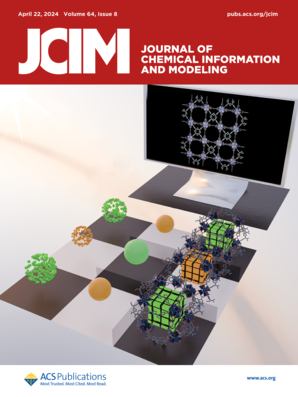A View on Molecular Complexity from the GDB Chemical Space.
IF 5.6
2区 化学
Q1 CHEMISTRY, MEDICINAL
引用次数: 0
Abstract
One recurring question when choosing which molecules to select for investigation is that of molecular complexity: is there a price to pay for complexity in terms of synthesis difficulty, and does complexity have anything to do with biological properties? In the chemical space of small organic molecules enumerated from mathematical graphs in the GDBs (Generated DataBases), most compounds are too complex and challenging for synthesis despite containing only standard functional groups and ring types. For these GDB molecules, we find that an increasing fraction (MC1) or number (MC2) of non-divalent nodes in the molecular graph represent simple measures of molecular complexity, which we interpret in terms of potential synthesis difficulties. We also show that MC1 and MC2 are applicable to commercial screening compounds (ZINC), bioactive molecules (ChEMBL) and natural products (COCONUT) and compare them with previously reported measures of molecular complexity and synthetic accessibility.从GDB化学空间看分子复杂性。
在选择哪些分子进行研究时,一个反复出现的问题是分子复杂性:就合成难度而言,复杂性是否需要付出代价?复杂性是否与生物特性有关?在gdb(生成数据库)的数学图中列举的小有机分子的化学空间中,尽管只包含标准的官能团和环型,但大多数化合物过于复杂,难以合成。对于这些GDB分子,我们发现分子图中增加的非二价节点的分数(MC1)或数量(MC2)代表了分子复杂性的简单度量,我们根据潜在的合成困难来解释这一点。我们还表明,MC1和MC2适用于商业筛选化合物(锌)、生物活性分子(ChEMBL)和天然产物(COCONUT),并将它们与先前报道的分子复杂性和合成可及性指标进行了比较。
本文章由计算机程序翻译,如有差异,请以英文原文为准。
求助全文
约1分钟内获得全文
求助全文
来源期刊
CiteScore
9.80
自引率
10.70%
发文量
529
审稿时长
1.4 months
期刊介绍:
The Journal of Chemical Information and Modeling publishes papers reporting new methodology and/or important applications in the fields of chemical informatics and molecular modeling. Specific topics include the representation and computer-based searching of chemical databases, molecular modeling, computer-aided molecular design of new materials, catalysts, or ligands, development of new computational methods or efficient algorithms for chemical software, and biopharmaceutical chemistry including analyses of biological activity and other issues related to drug discovery.
Astute chemists, computer scientists, and information specialists look to this monthly’s insightful research studies, programming innovations, and software reviews to keep current with advances in this integral, multidisciplinary field.
As a subscriber you’ll stay abreast of database search systems, use of graph theory in chemical problems, substructure search systems, pattern recognition and clustering, analysis of chemical and physical data, molecular modeling, graphics and natural language interfaces, bibliometric and citation analysis, and synthesis design and reactions databases.

 求助内容:
求助内容: 应助结果提醒方式:
应助结果提醒方式:


